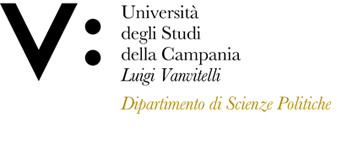SISTEMI DI ELABORAZIONE DELLE INFORMAZIONI (Corso Integrato)
Italiano
| Lingua di insegnamento | Italiano |
| Contenuti | PARTE PRIMA: FONDAMENTI DI ARCHITETTURE (6 ore) |
| Testi di riferimento | INFORMATICA DI BASE 6/ED, Dennis Curtin, Kim Foley, Kunal Sen, Cathy Morin, Agostino Marengo, Alessandro Pagano, ISBN: 9788838615375 |
| Obiettivi formativi | L'INSEGNAMENTO SI PONE L'OBIETTIVO DI FORNIRE AI DISCENTI GLI ELEMENTI |
| Prerequisiti | Nessuno |
| Metodologie didattiche | LEZIONI FRONTALI 5 CFU, LABORATORIO 1 CFU |
| Metodi di valutazione | Prova Scrittta e Orale. |
| Altre informazioni | Letture integrative ovvero eventuali programmi alternativi possono essere concordati direttamente con il docente sulla base degli interessi e delle esigenze formative individuali o collettive emerse durante le lezioni. |
| Programma del corso | PARTE PRIMA: FONDAMENTI DI ARCHITETTURE (6 ore) |
English
| Teaching language | Italian |
| Contents | FIRST PART: FUNDAMENTALS OF ARCHITECTURES (6 hours) |
| Textbook and course materials | INFORMATICA DI BASE 6/ED, Dennis Curtin, Kim Foley, Kunal Sen, Cathy Morin, Agostino Marengo, Alessandro Pagano, ISBN: 9788838615375 |
| Course objectives | THE GOAL OF THE COURSE IS TO PROVIDE THE STUDENTS THE MAIN ELEMENTS NEEDED TO UNDERSTAND GENERAL ASPECTS OF COMPUTER SYSTEMS AND THEIR APPLICATION TO THE FIELD OF INTEREST OF THE CURRICULUM, WITH A SPECIAL FOCUS ON METHODOLOGICAL ISSUES |
| Prerequisites | None |
| Teaching methods | LECTURES 5 CFU, LABS 1 CFU |
| Evaluation methods | WRITTEN AND ORAL EXAMINATION |
| Other information | Additional readings or alternative programs can be agreed directly with the professor on the basis of the individual or collective interests and needs that emerge during the lessons. |
| Course Syllabus | FIRST PART: FUNDAMENTALS OF ARCHITECTURES (6 hours) |








